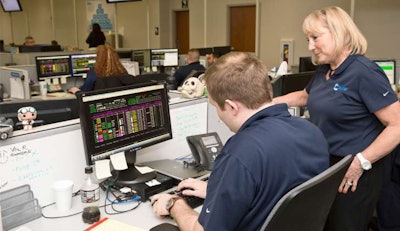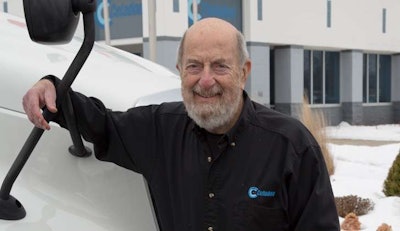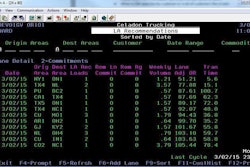
Celadon developed its Order Entry 2 (OE2) application internally and released the first version in 2013. The advanced decision support tool gives analysts a detailed systematic approach for accepting or rejecting load offers. The system scores each load on five primary factors, each with its own weight:
Customer Scorecard (15% weight): OE2 calculates a monthly score for customers that compares them to their peers in Celadon’s network and evaluates their ease of business collaboration. This scorecard consists of 12 items that include profitability, fuel surcharge, accounts receivable and EDI capabilities. Each item is weighted differently.
Origin Capacity (30%) and Destination Capacity (15%): These score a load based on Celadon’s capacity in the shipper’s and consignee’s region for that day of the week for the prior four weeks.
Modes of Transit (5%): This rewards points to a load that can be moved on rail or by a third-party carrier through Celadon’s brokerage division.
Operating Ratio (35%): This calculation takes the total break-even cost of a load divided by the average rate between the order and destination.
OE2 also determines a freight bonus or penalty to each load for various conditions. A load from a customer with a target growth account is given a bonus. A load with a short length of haul would have a penalty.
OE2 presents this information in decision screens to analysts, who can use function keys to drill down to more detail. The system is not being used to automatically accept or reject freight that is received electronically from customers through an EDI load tender, but OE2 has the foundation for that capability, says Mike Gabbei, vice president and chief information officer.
Soon, when OE2 rejects a load for whatever reason, the system will send an automated e-mail or interactive voice response to the customer that provides recommendations for how to get the load accepted. The customer could change the pickup or delivery date or pay an additional fee to deadhead a truck.
This automated response capability already has been given a label: a Celadon Solution. “The idea is to never say no, but to come up with an alternate idea,” says Steve Edmonds, vice president of information systems.
Click on one of the buttons below to see the next section about Celadon, or click this link to read the first article in the series.


















